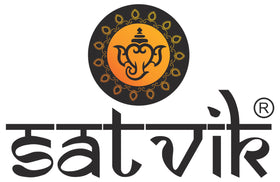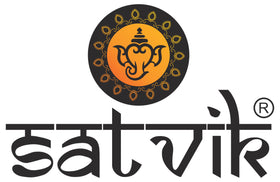
Nine days of Purity and Worship
Navratri, in English, means nine nights. Counted from the day of new moon day, these nine days have got meaning specific to each day. These nine days are significantly feminine with respect to the divine Devi who is represented via akhand diya. Although Navratri is celebrated in various months by different parts of the country, the major one is celebrated during the month of October, since it signifies the goddess of learning.
This festival, celebrated throughout India, signifies the victory of good over evil. The idea of Navratri is to allow the spirit inside to rest. To withdraw from all sensory activities and taking a deeper look within oneself, having the time to cleanse negative qualities from within and embrace joy and happiness is what Navratri is all about. To help achieve this, nine days of celebration and worshiping nine goddesses, preparing the akhand diya, purchasing decorated dandiya online, decorating of the stage, chanting of the scriptures of Hinduism and other rituals are carried out. Navratri is that time of the year when everyone feels loved and the spirits of people are the strongest. The feeling of being rejuvenated, harmonious and refreshed is felt at some point or the other in these nine days by each and every individual, regardless of their age or gender. Navratri truly signifies nine days of purity and worship, and it tends to unite all humans by the divine power of the goddess.
Navratri also signifies one of the most essential requirements of human beings, that is, being able to achieve the full potential as an individual. Hence, the nine days are about that while the tenth day, vis-à-vis Vijayadashami, is the day of victory, which also means that a human has blossomed to their potential.
To go in depth of what these nine days determine would make a human being understand the purity of this time of the year and why these days are worshipped by so many people. The three dimensions of the feminine are Durga, Saraswati and Lakshmi. Each of them symbolizes three different aspects, the earth in relation to inertia, the moon to mean knowledge and wholeness and the sun for passion, respectively. People seeking different things tend to worship these different versions of the divine power. Whoever’s seeking for influence and strength devote to Durga or Kali. Saraswati is worshipped by people aspiring for wisdom whereas those who aspire to become wealthy is devoted to Lakshmi. And the devotees of each goddess find a change in their energy level after these nine days of worship.
Navratri is also based upon a set of colours, set for each day as per their significance in terms of the goddess.
The first day represents red, or Shailaputri: the avatar of goddess Parvati to throw a significant light on the power of Brahma, Vishnu and Mahesh.
Day two stands for royal blue, or a figure of Brahmacharini to signify calm and harmonious nature. She is the one to bestow elegance and wealth. This colour, worn in the second day is delicate, yet strong. Yellow is the colour for the third day, and implies beauty. The colour is also a symbol of bravery. Just like the colour, the day gives a sense of serenity and everything and everyone seems to be in harmony with each other. Such is the power of this festival.
The creative power behind the universe is believed to be given by Kushmunda. She symbolizes life, greenery and vegetation. Therefore, dedicated to her is the colour green for day four. The next day represents grey colour, which is associated with the powerful yet delicate relationship of a mother and her child. As calm as she is in her normal time, she can turn into the most ferocious woman if anybody tries to harm her child in anyway.
Orange is known to be the colour of bravery. Katyayani was believed to be a version of Durga and signifies courage. Hence, orange is worn on the sixth day of Navratri.The most powerful avatar of the goddess Shakti, Kalratri is dark coloured, and radiates power and has three eyes. But her colour is white to represent peace. Day eight represents intelligence, and pink is worn on that day. Pink denotes optimism. In the ninth day of the festival, happiness, blessings and positivity is radiated and therefore, sky blue is the colour for the day. The goddess related to the colour is believed to have blessed all the worshippers with delight so pure that it is related to the blue sky and hence the theme of the day.
Having talked about why these nine days are important and what each day represents, it is time to glance on some other important factors followed in Navratri. One of the most significant symbols of Navratri is the Akhand Diya. This oil lamp, popularly known as “Maa ki Jyoti”, is burned unremittingly for these nine days of worship to honour the divine Devi. In Hinduism, the Akhand Diya is a fundamental component of any type of puja and has a lot of significance. No worshiping is considered to be complete without lighting the akhand diya. Akhand diya is considered to the symbol of knowledge, good luck, purity, prosperity. So, to remove darkness, this Akhand Diya is lit for the entire duration of Navratri without any interruption. This akhand diya is generraly or brass and decorated with flowers as well.
Navratri also bring with itself, lots of dancing!
To celebrate the festival of Navratri, there are mainly two types of dancing. One is called Garba. It is a traditional dance where the hands are clapped while forming a circle and dancing to the beat and slowly increasing the speed.
The second type of dance is the Dandiya Raas. For thos decorated dandiya online can be bought. Various types of decorations are done on bamboo sticks and used as props while grooving to the rhythm of music. The decotated dandiya onlline purchased sticks are hit together as per the beats of the music and usually danced with a partner. This dance enacts the battle that was fought between the Devi and the demon, where these decorated dandiya sticks represent the Devi’s sword and hence this dance is also known as ‘The sword Dance’. These decorated dandiya sticks are decorated with multiple designs in beautiful colours and shimmers added to them are found online.
Navratri is celebrated all over the country with the feeling spirituality, signified by the akhand diya and joy, signified by the dance done using decorated dandiya.
This festival, celebrated throughout India, signifies the victory of good over evil. The idea of Navratri is to allow the spirit inside to rest. To withdraw from all sensory activities and taking a deeper look within oneself, having the time to cleanse negative qualities from within and embrace joy and happiness is what Navratri is all about. To help achieve this, nine days of celebration and worshiping nine goddesses, preparing the akhand diya, purchasing decorated dandiya online, decorating of the stage, chanting of the scriptures of Hinduism and other rituals are carried out. Navratri is that time of the year when everyone feels loved and the spirits of people are the strongest. The feeling of being rejuvenated, harmonious and refreshed is felt at some point or the other in these nine days by each and every individual, regardless of their age or gender. Navratri truly signifies nine days of purity and worship, and it tends to unite all humans by the divine power of the goddess.
Navratri also signifies one of the most essential requirements of human beings, that is, being able to achieve the full potential as an individual. Hence, the nine days are about that while the tenth day, vis-à-vis Vijayadashami, is the day of victory, which also means that a human has blossomed to their potential.
To go in depth of what these nine days determine would make a human being understand the purity of this time of the year and why these days are worshipped by so many people. The three dimensions of the feminine are Durga, Saraswati and Lakshmi. Each of them symbolizes three different aspects, the earth in relation to inertia, the moon to mean knowledge and wholeness and the sun for passion, respectively. People seeking different things tend to worship these different versions of the divine power. Whoever’s seeking for influence and strength devote to Durga or Kali. Saraswati is worshipped by people aspiring for wisdom whereas those who aspire to become wealthy is devoted to Lakshmi. And the devotees of each goddess find a change in their energy level after these nine days of worship.
Navratri is also based upon a set of colours, set for each day as per their significance in terms of the goddess.
The first day represents red, or Shailaputri: the avatar of goddess Parvati to throw a significant light on the power of Brahma, Vishnu and Mahesh.
Day two stands for royal blue, or a figure of Brahmacharini to signify calm and harmonious nature. She is the one to bestow elegance and wealth. This colour, worn in the second day is delicate, yet strong. Yellow is the colour for the third day, and implies beauty. The colour is also a symbol of bravery. Just like the colour, the day gives a sense of serenity and everything and everyone seems to be in harmony with each other. Such is the power of this festival.
The creative power behind the universe is believed to be given by Kushmunda. She symbolizes life, greenery and vegetation. Therefore, dedicated to her is the colour green for day four. The next day represents grey colour, which is associated with the powerful yet delicate relationship of a mother and her child. As calm as she is in her normal time, she can turn into the most ferocious woman if anybody tries to harm her child in anyway.
Orange is known to be the colour of bravery. Katyayani was believed to be a version of Durga and signifies courage. Hence, orange is worn on the sixth day of Navratri.The most powerful avatar of the goddess Shakti, Kalratri is dark coloured, and radiates power and has three eyes. But her colour is white to represent peace. Day eight represents intelligence, and pink is worn on that day. Pink denotes optimism. In the ninth day of the festival, happiness, blessings and positivity is radiated and therefore, sky blue is the colour for the day. The goddess related to the colour is believed to have blessed all the worshippers with delight so pure that it is related to the blue sky and hence the theme of the day.
Having talked about why these nine days are important and what each day represents, it is time to glance on some other important factors followed in Navratri. One of the most significant symbols of Navratri is the Akhand Diya. This oil lamp, popularly known as “Maa ki Jyoti”, is burned unremittingly for these nine days of worship to honour the divine Devi. In Hinduism, the Akhand Diya is a fundamental component of any type of puja and has a lot of significance. No worshiping is considered to be complete without lighting the akhand diya. Akhand diya is considered to the symbol of knowledge, good luck, purity, prosperity. So, to remove darkness, this Akhand Diya is lit for the entire duration of Navratri without any interruption. This akhand diya is generraly or brass and decorated with flowers as well.
Navratri also bring with itself, lots of dancing!
To celebrate the festival of Navratri, there are mainly two types of dancing. One is called Garba. It is a traditional dance where the hands are clapped while forming a circle and dancing to the beat and slowly increasing the speed.
The second type of dance is the Dandiya Raas. For thos decorated dandiya online can be bought. Various types of decorations are done on bamboo sticks and used as props while grooving to the rhythm of music. The decotated dandiya onlline purchased sticks are hit together as per the beats of the music and usually danced with a partner. This dance enacts the battle that was fought between the Devi and the demon, where these decorated dandiya sticks represent the Devi’s sword and hence this dance is also known as ‘The sword Dance’. These decorated dandiya sticks are decorated with multiple designs in beautiful colours and shimmers added to them are found online.
Navratri is celebrated all over the country with the feeling spirituality, signified by the akhand diya and joy, signified by the dance done using decorated dandiya.




















